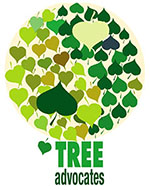Regular mowing takes off flower heads, depriving bees and other insects of food such as nectar and pollen. This depletes insect populations which in turn reduce food supply to birds such as riroriro (Grey Warbler), tauhou (White-eye), sparrows and starlings. Lack of flowers is also detrimental to bees who make it possible for us to grow strawberries, kiwifruit, nuts, apples, and many other foods. In that way, flowering plants not only delight the eye but sustain life around us.
You can help our bees and nature in general by reducing mowing – especially during flowering season – and planting pollinator-friendly plants. Here are some plants to consider (some are delicious herbs and vegetables, so you will win-win!):
Bee-friendly kitchen and herb plants
Herbaceous
- Basil (Ocimum basilicum)
- Chives (Allium schoenoprasum)
- Cucumber, melon (Cucumis spp.)
- Echinacea (Echinacea purpurea)
- Pot marigold (Calendula officinalis)
- Sage (Salvia officinalis)
- Squash, pumpkin (Cucurbita spp.)
- Sunflower (Helianthus annuus)
- Sweetcorn (Zea mays)
Trees, shrubs and climbers
- Apple (Malus spp.)
- Bay laurel (Laurus nobilis)
- Kiwifruit (Actinidia deliciosa)
- Lavender (Lavandula spp.)
- Lemon, orange, grapefruit (Citrus spp.)
- Pear (Pyrus spp.)
- Plum, peach (Prunus spp.)
- Rosemary (Rosmarinus officinalis)
Bee-friendly ornamental flowers & plants
Herbaceous
- Balsam (Impatiens glandulifera)
- Cornflower (Centaurea spp.)
- Hollyhock (Alcea spp.)
- Michaelmas daisy (Aster novae-angliae)
- Penstemon (Penstemon spp.)
- Phacelia (Phacelia tanacetifolia)
- Salvia (Salvia spp.)
- Sweet alyssum (Lobularia maritima)
- Zinnia (Zinnia spp.)
Trees, shrubs and climbers
- Cabbage tree (Cordyline australis)
- Harakeke (Phormium tenax/cookianum)
- Korokio (Corokia cotoneaster, spp.)
- Koromiko (Hebe stricta/salicifolia)
- Kaihua, jasmine (Parsonsia heterophylla)
- Kowhai (Sophora microphylla)
- Lacebark (Hoheria populnea/sexstylosa/angustifolia)
- Mānuka (Leptospermum scoparium)
- Pōhutukawa/Rata (Metrosideros spp.)
- Putaputaweta (Carpodetus serratus)
- Rengarenga (Arthropodium cirratum)
- Rewarewa (Knightia excelsa)
- Tarata, kohuhu, karo (Pittosporum spp.)
- Three/Five finger (Pseudopanax colensoi/arboreum)
Non-natives
- Australian gum (Eucalyptus spp.),
- Wattles (Acacia spp.)
- Banksia (Banksia spp.)
- Bottlebrush (Callistemon spp.)
- Camellia (Camellia spp.)
- Maple (Acer spp.)
- Michelia (Michelia spp.)
- Oak (Quercus spp.)
- Tulip tree (Liriodendron tulipifera)
- Wisteria (Wisteria sinensis)
Tips for how to plant to benefit bees:
Be sure to select cultivars that attract bees:
- Select “single” flowers not “doubles” or “triples”
- Choose simple traditional flowers not highly modified flowers
- Garden catalogues often mark which cultivars attract bees
- Plant in generous clusters of the same species as large clusters of each species will attract more bees
- Plant flowers for each season to create a (more or less) continuous source year round to sustain different pollinators and nectar-suckers
(Information derived from Trees for Bees. Acknowledged with thanks.
Visit Trees for Bees for lots more information and resources about bees and plants.)

